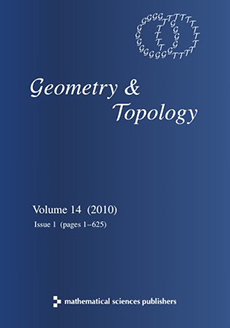Abstract
Bidouble covers of the quadric are parametrized by connected families depending on four positive integers . In the special case where we call them –surfaces.
Such a Galois covering admits a small perturbation yielding a general –tuple covering of with branch curve , and a natural Lefschetz fibration obtained from a small perturbation of the composition .
We prove a more general result implying that the braid monodromy factorization corresponding to determines the three integers in the case of –surfaces. We introduce a new method in order to distinguish factorizations which are not stably equivalent.
This result is in sharp contrast with a previous result of the first and third author, showing that the mapping class group factorizations corresponding to the respective natural Lefschetz pencils are equivalent for –surfaces with the same values of . This result hints at the possibility that –surfaces with fixed values of , although diffeomorphic but not deformation equivalent, might be not canonically symplectomorphic.
Citation
Fabrizio Catanese. Michael Lönne. Bronislaw Wajnryb. "Moduli spaces and braid monodromy types of bidouble covers of the quadric." Geom. Topol. 15 (1) 351 - 396, 2011. https://doi.org/10.2140/gt.2011.15.351
Information





